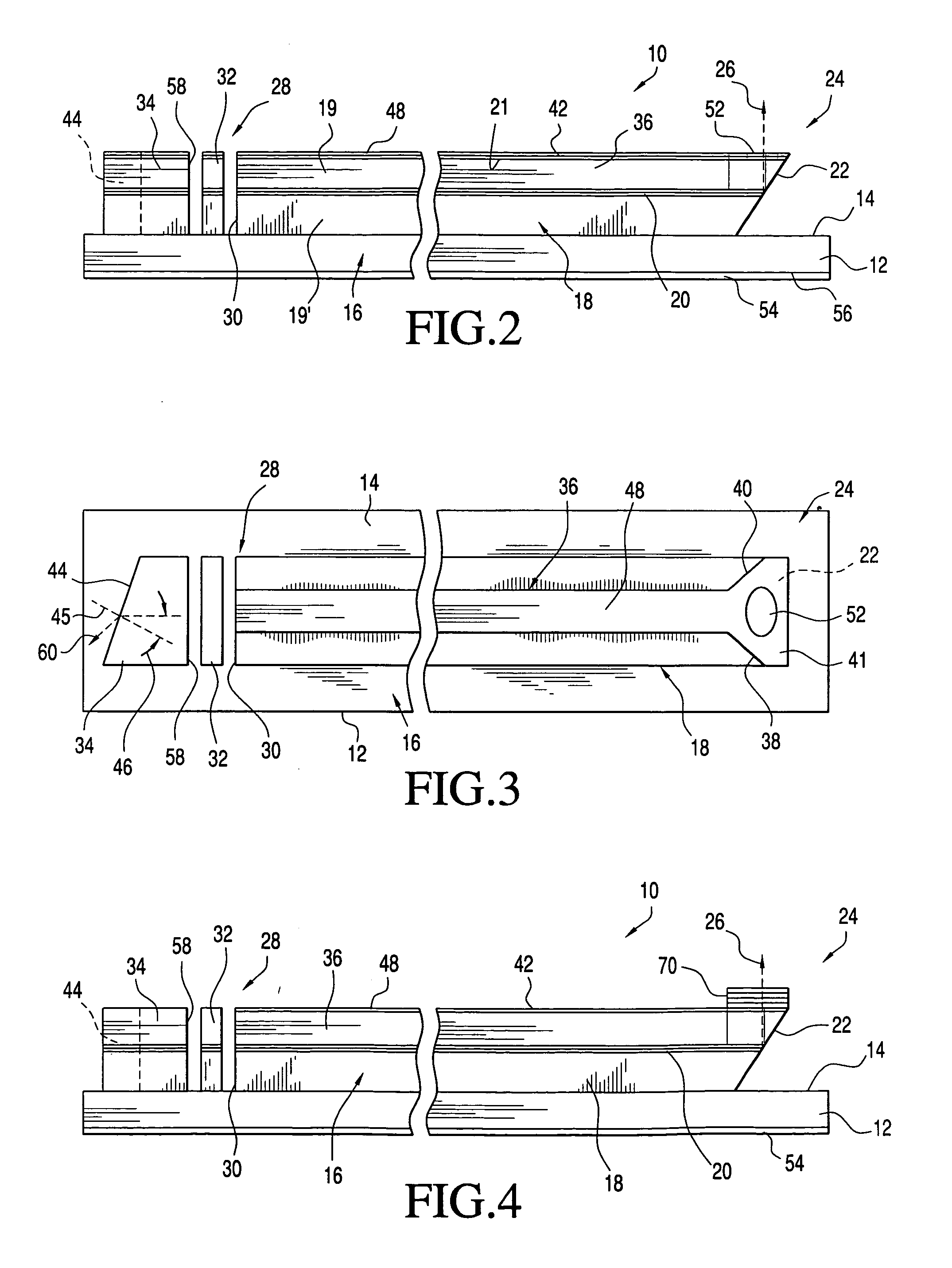Surface emitting and receiving photonic device with lens
a photonic device and surface technology, applied in semiconductor laser arrangements, optical resonator shape and construction, semiconductor lasers, etc., can solve the problems of incompatible monolithic integration, inability to test devices in full-wafer, and same deficiencies, so as to facilitate laser operation monitoring
- Summary
- Abstract
- Description
- Claims
- Application Information
AI Technical Summary
Benefits of technology
Problems solved by technology
Method used
Image
Examples
Embodiment Construction
[0043] Turning now to a more detailed description of the invention, a surface emitting semiconductor laser 10 fabricated on a substrate 12 is illustrated diagrammatically in FIGS. 1-3. Although the invention will be described in terms of a ridge laser, it will be understood that other types of lasers may be fabricated utilizing the features of the invention as herein described.
[0044] As is conventional in the fabrication of solid state ridge lasers, the substrate 12 may be formed, for example, of a type III-V compound, or an alloy thereof, which may be suitably doped. The substrate includes a top surface 14 on which is deposited, as by an epitaxial deposition such as Metalorganic Chemical Vapor Deposition (MOCVD) or Molecular Beam Epitaxy (MBE), a succession of layers generally indicated at 16 which form an optical cavity 18 that includes an active region 20. A horizontal cavity semiconductor laser structure such as the optical cavity 18 typically contains upper and lower cladding ...
PUM
 Login to View More
Login to View More Abstract
Description
Claims
Application Information
 Login to View More
Login to View More - R&D
- Intellectual Property
- Life Sciences
- Materials
- Tech Scout
- Unparalleled Data Quality
- Higher Quality Content
- 60% Fewer Hallucinations
Browse by: Latest US Patents, China's latest patents, Technical Efficacy Thesaurus, Application Domain, Technology Topic, Popular Technical Reports.
© 2025 PatSnap. All rights reserved.Legal|Privacy policy|Modern Slavery Act Transparency Statement|Sitemap|About US| Contact US: help@patsnap.com



